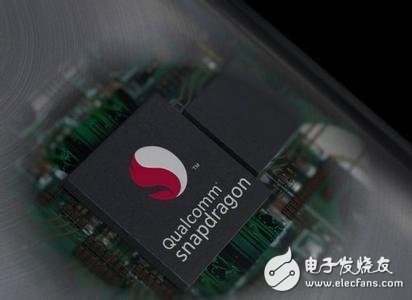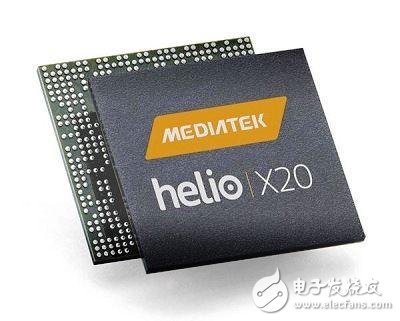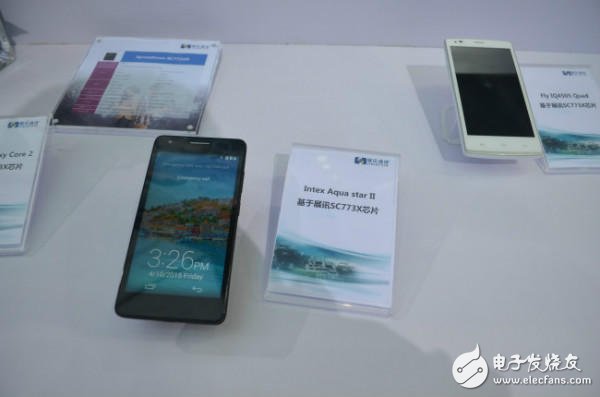Qualcomm is facing the most severe challenges in history! It has been affected by the anti-monopoly investigations in the mainland and Europe, and the 4G chip market has been affected by the food division. The financial measurement target has been revised again. It is estimated that this year's profit will fall by more than 30% compared with last year, in order to let Profits to stop bleeding, Qualcomm even had to lay off about 4,000 people.
The high ventilation is weak, which also reflects the fierce attack and defense of 4G chips. The pressure of killing the price not only hurts itself, but also affects the main competitor MediaTek; MediaTek has set up a law conference on July 31, which will be released before and after TSMC and Qualcomm. After the bad news, what more can investors expect?
MediaTek officially entered the 4G chip battle last year. At that time, almost all professional analysts determined that MediaTek was the most outstanding last year to win 10% market share. The result was a 20% market share, which was better than expected and fell below all experts. Glasses.
Even at the beginning of the second quarter of this year, Qualcomm revised its financial targets for this year and bluntly consolidated its market share with more drastic measures. It directly predicted that the price war of 4G chips will arrive. MediaTek said that under the fierce competition, the gross profit margin may be It will not stop falling until the second half of the year.
However, MediaTek also stressed that it will actively deploy high-end 4G chips (challenging the high-priced 4G smart phone market in mainland China), and set aside 150 million sets of 4G chip shipments this year, and the challenge is more than 40% in the land market. The goal is completely unaffected by the intimidation of the opponent.
This Qualcomm is frequently declining, and MediaTek’s repeated surprise performances can continue. This year’s market share of the two sides is the key. It is not difficult to hear from the Qualcomm financial conference that because the high-end chip market is under pressure, it has already sacrificed its price to defend its market. In addition, from the perspective of mobile phone supply chain news, it is the MediaTek’s nearly two months that caused Qualcomm’s serious injury. The high-end chip Helio X10, which is the main high-end chip, has cut the price by 30%. It has indeed hurt Qualcomm.
From this, it can be expected that MediaTek wants to stop the rebound of gross profit margin in the second half of the year. It is impossible to stop the rebound of the gross profit margin. At the end of the month, MediaTek will hold a law conference. The only good news that can be expected is that the bloody battle will start and the market share of 40% can be obtained. Only when the market share is upgraded will there be an opportunity for profit to stop falling next year.
Dare to fight! MediaTek PK Qualcomm LTE mobile chip leader
In the 4G mobile communication market, the competition is intensifying. In addition to the latest LTE technology development, such as Cat. 9, three-carrier aggregation (3CCA), the processor manufacturers rely on 10 core, 2.5D package stacking, and even TSV. Unique design, creating a functional integration and cost-effective solution, set off a new round of technical warfare. Mobile processor maker Qualcomm will usher in a new round of layoffs. Compared with last year's 1,400 layoffs, this position may be even larger. It is estimated that 4,000 employees worldwide will be affected. Some time ago, there were important personnel changes in Qualcomm China. Wang Xiang, the company's senior vice president and president of Greater China, joined Xiaomi. From this point of view, the hardest hit areas of Qualcomm layoffs will be concentrated in Greater China. Qualcomm's layoffs again showed no surprises in the industry, and the profits were not as comfortable as they were originally. However, it is shocking to lay off 4,000 people, and Microsoft has reduced the number of layoffs in Nokia's assets, including manufacturing plants, to 7,000. What happened to Wang Gaotong, the king of mobile processors?
4G LTE in the field of communication enters the quasi-5G era
The patent barrier of CDMA or WCDMA technology was broken. MediaTek and Intel saved the country through the VIA's curve. Huawei's Haisi cut into the market by means of patchwork. The anti-monopoly case ended the patent charging ecology of Qualcomm mobile phone chips in China. In the core battle, Qualcomm lost its advantage, and the Snapdragon 810 overheated was even worse. Apple relies on its own application processor A series to step into the rivers and lakes, and Samsung is now closely following the technological advantages. The tide of change in Europe and the United States has been slow, the Chinese mobile phone market has shrunk, and the emerging third world market has shown strong consumer demand. However, the low-end and low-end mobile phone chips have low gross profit margins and will not enter Qualcomm's financial reports. These markets have been firmly controlled by the manufacturers of “grounding gas†such as Perfect, MediaTek, Spreadtrum, and Ruixinwei. ARM's 64-bit Cortex-A72 mobile processor architecture, released in February this year, is still the best architecture for improving system performance and reducing device power consumption. Moore's Law is stagnant. The 14nm Opteron 820 is not known for its listing date or postponed. Cortex players are more and more, and the choice of differentiated new products is very rich. Qualcomm's first market share is in jeopardy.
The semiconductor industry's M&A tide has followed suit. Recently, the industry has reported that MTK and Nvidia may merge or strategically cooperate. If MTK's AP+Nvidia GPU, MTK's full set of mobile phone chip solutions will continue to erode Qualcomm's market share. MediaTek has cooperated with US telecom operators to launch a contract machine equipped with MediaTek mobile phone chips, but the amount is very small; Huawei P8 entered the US market and abandoned the use of Kirin 935 instead of the Snapdragon 615. It can only be said that Qualcomm's backyard is temporarily worry-free.

However, the front battlefield high-pass position has fallen. In 2013, Qualcomm's market share accounted for 48.60%, accounting for almost half of the mobile processor market. Samsung and MediaTek, which ranked second and third, only won 28.44% and 7.78% of the cake; in 2014, Qualcomm's market share plummeted to 32.3%, while MediaTek soared to 31.67%. In 2015, industry analysts estimated that MTK's 4G shipments in the third quarter will officially catch up with Qualcomm.
MediaTek challenges Qualcomm LTE leader
For the smart phone field, MediaTek launched a rich product portfolio, including the release of the Helio X20, a 10-core mobile phone chip, and the release of the Helio P10, which will meet the challenges of global product development and transformation with a series of high-end chips. Customer demand for mid- to high-end products and a better consumer experience. Randy Abrams, an analyst at Credit Suisse in Taipei, said that MediaTek’s share of the LTE market is expected to increase to 40-45% in the second half of 2015, double the 20% in the fourth quarter of 2014; Abrams The newly released report predicts that MediaTek's 2015 LTE chip shipments will reach 1.60~165 million, exceeding the company's previous expectations of 150 million. Sravan Kundojjala, an analyst at Strategy AnalyTIcs, another market research organization, pointed out that MediaTek's LTE application processor shines in the Chinese market in the first quarter of this year: "MediaTek will continue to continue with LTE baseband chips in the next few quarters. The market is attacking the city. "MediaTek has always had more advantages than the competitors in the Chinese market. The company has been actively establishing close cooperation with local mobile phone operators as early as ten years ago.
According to statistics from market research institutions, MediaTek, the world's third-largest chip design company, continues to expand its footprint in the LTE market and is challenging the leading Qualcomm through its influence in the growing Chinese smartphone market. Qualcomm) status. Strategy AnalyTIcs believes that the smartphone market outlook is still optimistic, sales can be 1.5 billion in 2015, and further increased to 1.7 billion in 2017; the agency analyst Neil Mawston pointed out that China, India and the United States are global smartphones. The driving force of the market, but India will replace the United States in 2017, becoming the world's second largest smartphone market.

P series products bring more design flexibility to smart phone manufacturers. The new Helio P10 is the first to use TSMC's 28nm (nm) HPC+ process, which can effectively reduce processor power consumption, and the current wisdom of using 28nm HPC process. Compared with the single-chip mobile phone system, the Helio P10 can save up to 30% of the power consumption, not only in line with the lightweight and diverse multimedia experience, but also the battery life. Credit Suisse's Abrams said that MediaTek's current business in the 4G sector is mainly from entry-level LTE handsets, but its latest high-end Helio series chips are also gaining popularity in some markets. MediaTek said in April that the company is gradually moving from low-end 4G mobile phones to high-end 4G products.
MediaTek Potential Challenger Exhibition
China, which is also the world's leading smartphone manufacturer, is the strategic focus of various mobile phone chip suppliers; including LTE chip leader Qualcomm, and subsequent MediaTek, Spreadtrum, Samsung, Marvell and Intel. According to Strategy AnalyTIcs, Shanghai-based Spreadtrum became the third-largest LTE chip supplier in the first quarter of 2015, with a quarterly revenue of 7%. Spreadtrum also replaced MediaTek as the second largest supplier of 3G baseband chips; Kundojjala of Strategy AnalyTIcs said that because the company's chips are stationed in Samsung, Lenovo, Huawei, HTC and other mobile phone manufacturers: "We expect Spreadtrum will continue to expand its footprint in the LTE baseband chip market with its LTE application processor."

Spreadtrum's latest quad-core A7 platform, SC773X
MediaTek reaffirmed its market outlook for 2015 at the end of April. It is expected that its smartphone chip terminal shipments will reach 450 million units, of which 1.5 are LTE products. However, Credit Suisse believes that such a forecast is “too optimisticâ€. The shipment of MediaTek's smartphone chips has been reduced to between 420 million and 403 million. The main consideration is that Spreadtrum will steal a lot of MediaTek's business in the 3G mobile phone field. In the first quarter of this year, MediaTek's dual-core and below products accounted for 40% to 45% of total shipments, four-core products shipped to approximately 40%, and eight-core products shipped at approximately 10%. 15%; MediaTek estimates that the shipment of eight core products will grow by about 5% in the second quarter, while the proportion of four-core products will remain at around 45%, while the proportion of dual-core products will be reduced to about 35%.
Solar Charge Controller,Solar Controller,Solar Controller 12V,Charge Controller
Easun Power Technology Corp Limited , https://www.easun-power.com